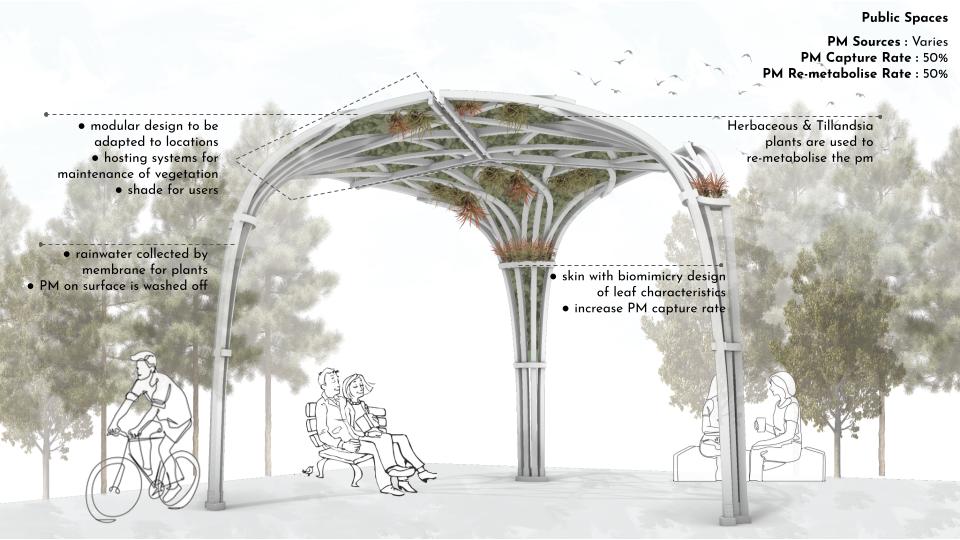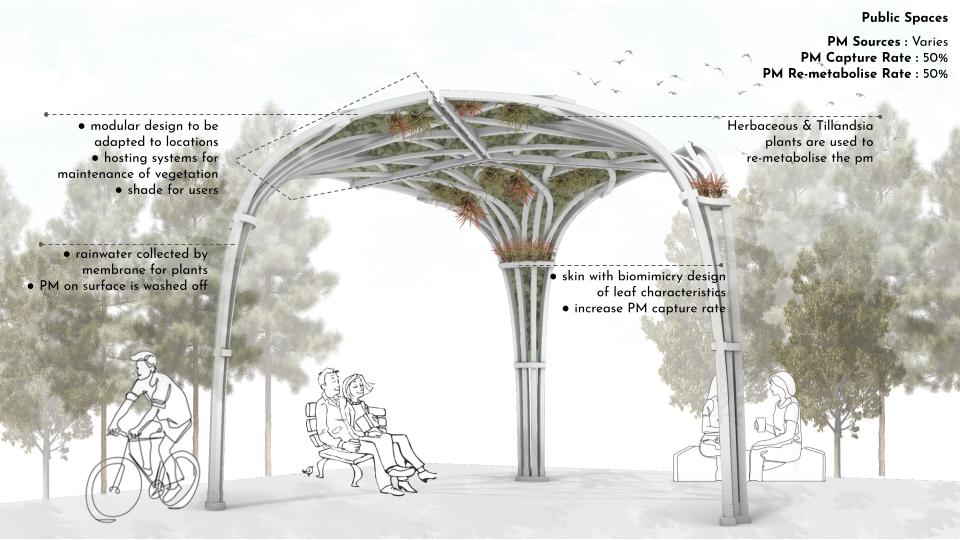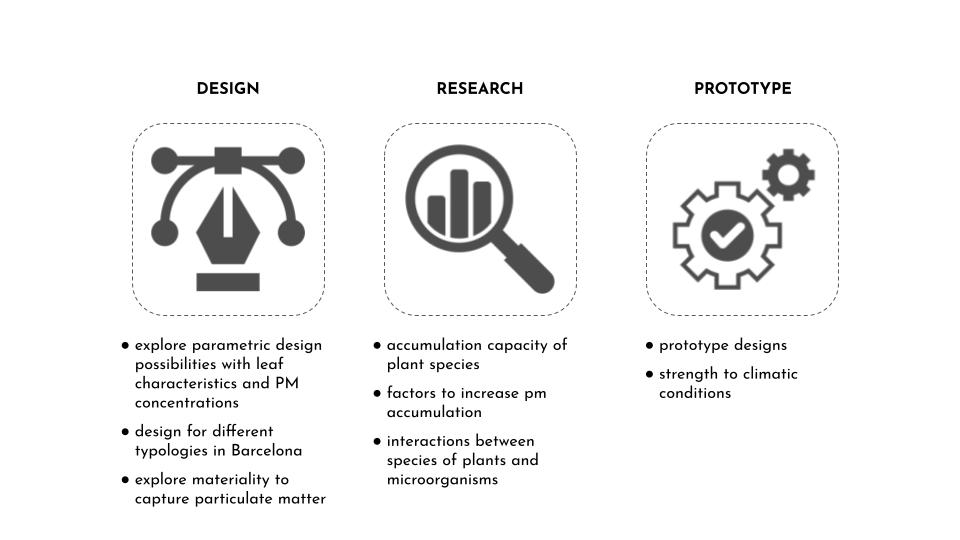AIR COMFORT
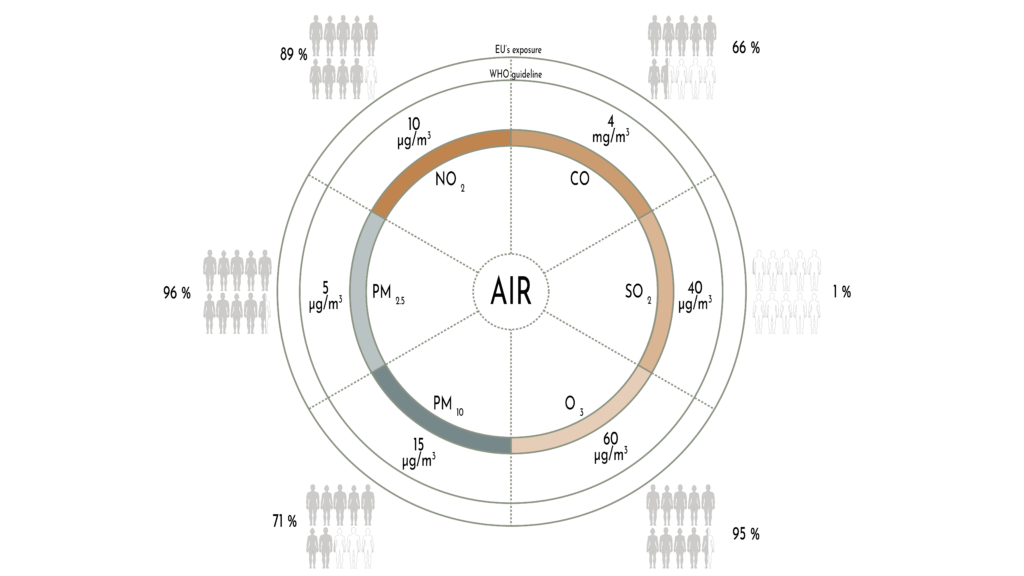
The air comfort depends on the gases and particulate matters in the air. The gases consist of nitrogen dioxide, carbon monoxide, sulphur dioxide and ozone. As well as the gases there are particulate matters in air which are categorised depending on their diameter. The main categories are the PM2.5 and PM10.
In 2021 WHO published a guideline on what the level of these particulate matters and gases in air should be
The European Environment Agency published EU populations who are being exposed to higher levels of pollutants. 96 % of the people are exposed to a higher level of pm 2.5 and 71% are exposed to pm10.

Low air quality can cause headache and anxiety, irritation of eyes and breathing problems, coughing and skin irritation in a short-term exposure as well as severe health issues such as damage to central nervous system, lung cancer, cardiovascular disease related mortality, skin cancer and asthma in a long-term exposure.
According to the studies, analysing the health impacts of the particles and gases in air, done by the European Environment Agency, the particulate matters cause the most substantial health impacts as these particles are usually present on the pedestrian level outside. The PM is a widespread air pollutant, consisting of a mixture of solid and liquid particles suspended in air. Even with the same mass concentration depending on the composition of the PM, the effect on the human body varies considerably.
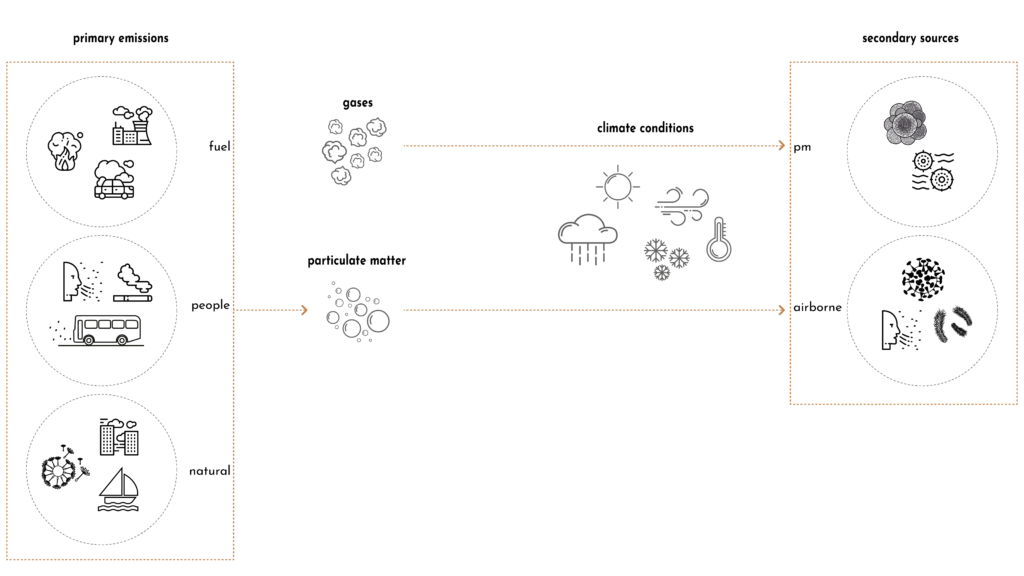
The composition of particulate matters is also an important factor to consider and the physical and chemical characteristics of the PM vary depending on the location and source of emission. The primary emissions can be from both natural and man-made sources. The natural ones include wind-blown dust, sea salt, pollens, soil particles, dust from the mountain. Manmade sources constitute of fossil fuel combustion (especially in vehicles and power plants), industrial processes (producing metals, cement, lime and chemicals), construction work, quarrying and mining activities, cigarette smoking and wood stove burning, and the port.
As well as the particulate matters from these primary sources there are gasses produced which, after climate conditions such as rain, snow or the temperature, via condensation they solidify into particulate matters and airborne micro-organisms.
Air-borne micro-organism are a vital component of particulate matters as they spread in the atmosphere by attaching to a particulate matter and they have a vital role in health impacts, atmospheric chemistry and eco-system interactions.
CASE STUDY CITY : BARCELONA
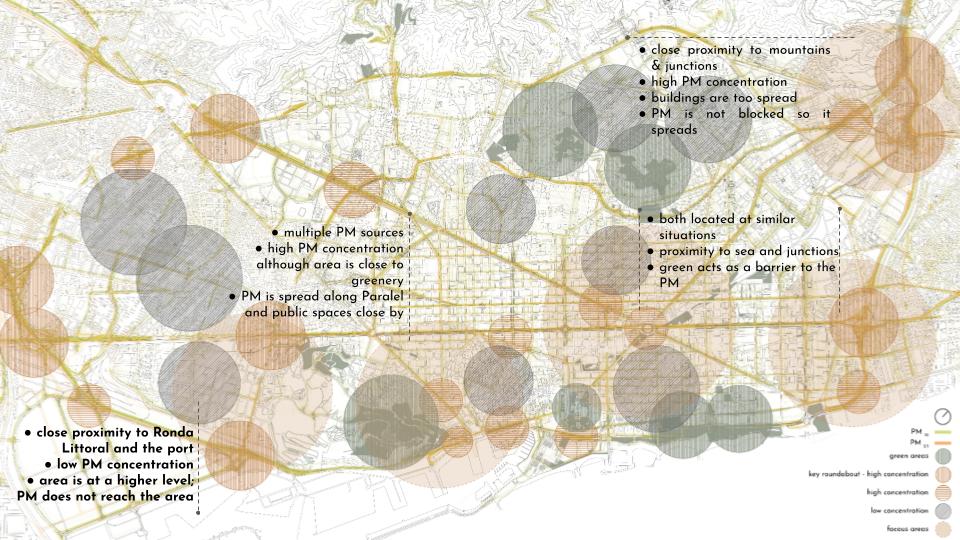
The concentration of PM 10 around Barcelona varies depending on parameters such as proximity to the mountains, the sea, the main roads. We can observe that the closer you get to the mountain or the sea the concentration increases as well as at the key intersections Last year PM10 reached a maximum of 65 microg/m3 guideline is 15. The same situation is valid for PM 2.5 concentrations however PM 2.5 is more spread along the city. Last year reached 50 guideline is 5.

3 different paths to analyse how as pedestrians the way we move along the city has an impact on how we interact with particles in the air. Route 1 is a 15 min walk along a high road and a section which links Ronda Littoral with the city. Although the path looks green, it is not enough to re-metabolise or block the particulate matters from reaching the pathway. Second route is a 30 min walk which mainly consists of walking from smaller streets where there is less traffic, less PM emission, and includes pedestrianised pathways through the park as well. The third route is a 50 min walk which is mainly a walk through the park, although the park is next to the main road and the sea, the green areas act as a barrier to the PM so the concentration along the pathway is lower.
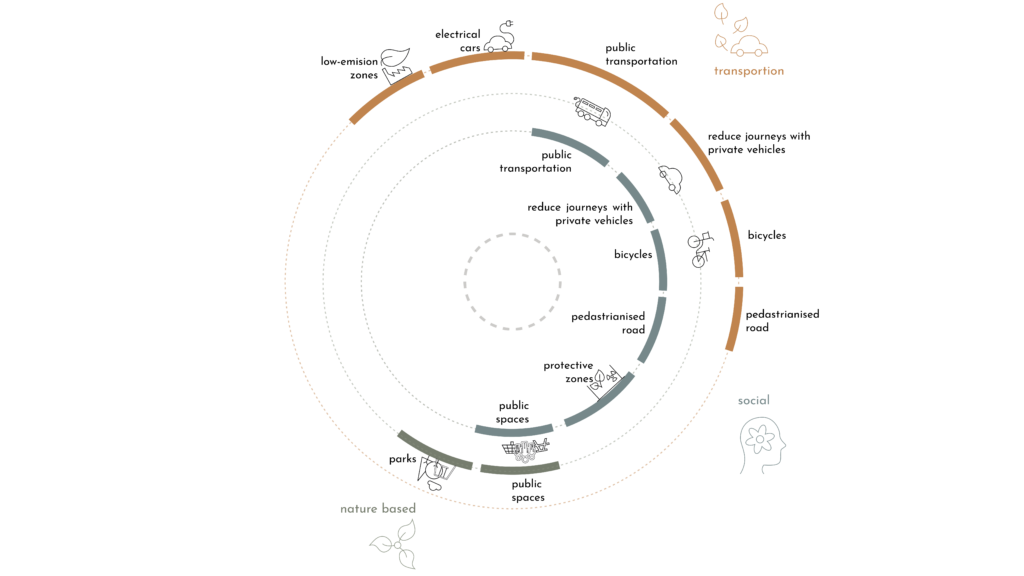
Looking further into the case of Barcelona, I looked into what is being done to tackle the air comfort issue in the city. In this regard and as a part of the European Green Deal, to make a clean climate in Europe by 2050, there are several actions taken to reduce the concentration of particles in air. I categorised these measures into transportation, social and nature-based solutions. According to the measures published by Barcelona City Council, the main focus is to increase the use of public transport, electric based transportation, introduce more pedestrian only streets and promoting low-emission zone in Barcelona’s key points so the main measure deals with reducing the primary emissions of PM and these also include social aspects such as protective zones, encouraging citizens to chose more electric-based vehicles as well as reduce number of journeys with private vehicles. However, there aren’t many measures with nature-based solutions, to capture the existing PM or re-metabolising the PM.
THESIS STATEMENT
Rapid development in cities has led to an uncontrolled densification resulting in inadequate comfort level in cities due to low air quality caused by traffic as well as other natural emissions. “AIReclaim” is the exploration of urban design installations which can capture and re-metabolise the particulate matters to increase the air comfort in Barcelona. The design of the infrastructure will be adapted to different urban morphologies and environmental conditions. These infrastructures will become a living system in the urban fabric by capturing the particle matters in the surrounding thus increasing the air quality in a micro-climatic approach.
VEGETATION
Vegetation has a key role in controlling the density of molecules in the air however, use of climate specific vegetation which act as air filters is crucial. According to studies some species of plants have different effect on particle removal at different climate zones.
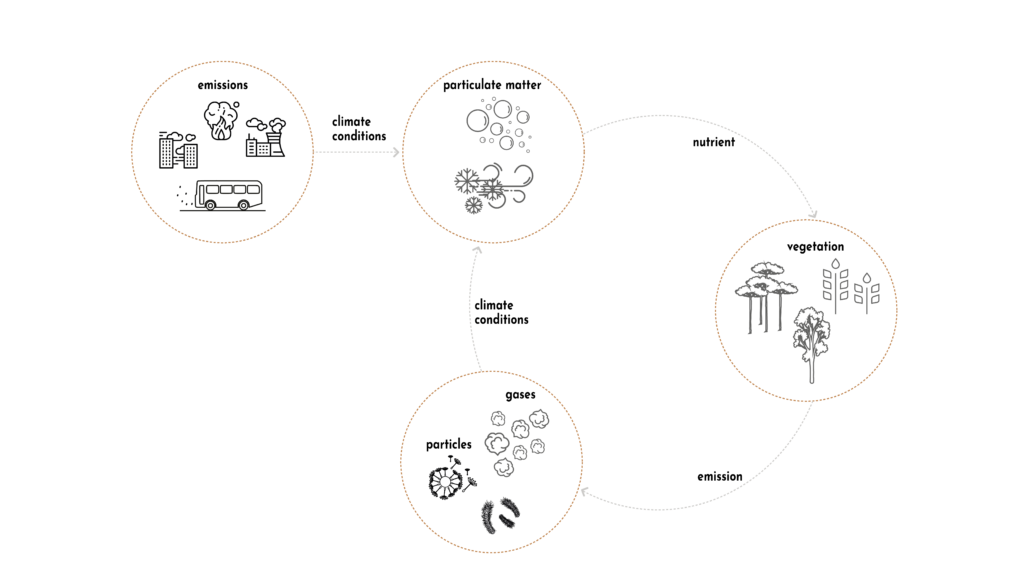
Vegetation can control the density of the particles in the air is by using them as a nutrient. Although vegetations also emit VOCs which are still particles they get into the loop of becoming a nutrient again.
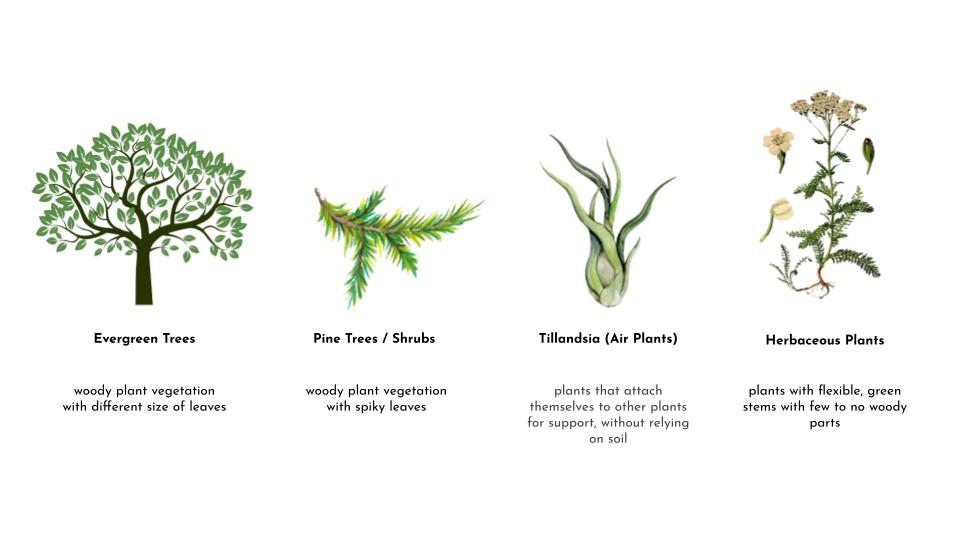
The case with Barcelona and species of plants which are suitable to grow in Barcelona, these include evergreen trees, pine trees and shrubs, air plants and herbaceous plants such as the yarrow plant, low grass and Brickellia.

The process of re-metabolising PM with vegetation happens, the process is phytoremediation and it takes place at different parts of the tree. Firstly, the PM is stuck to the surface of the leaf. From here some of the PM enters through the wax and is re-metabolised with the phyllosphere and rhizosphere micro-organisms in the leaf. Some of the PM is degraded and subsequently volatilized into the atmosphere through stomata. These are degraded by hydroxyl radicals into the atmosphere and can stay as air pollutants but with a lower toxicity than before. The PM which is left on the surface of the leaf, with rain, will be washed of into the soil where it will be re-metabolised through the roots by plant specific enzymes such as nitroreductas, dehalogenases and laccases. Looking into the accumulation capacity in the leaf and the stem, there is a high percentage of accumulation through the epicuticular wax so the leaf is an important element to consider.

What factors of the leaf impact the accumulation capacity?
The percentage of trichomes available on the leaf, type of pubescence (hairs), veins and epicuticular wax have an impact on the accumulation capacity of particulate matter by the leaf. As well as the leaf size and shape, leaves with a spiky shape, small but many numbers of leaves have a greater accumulation.
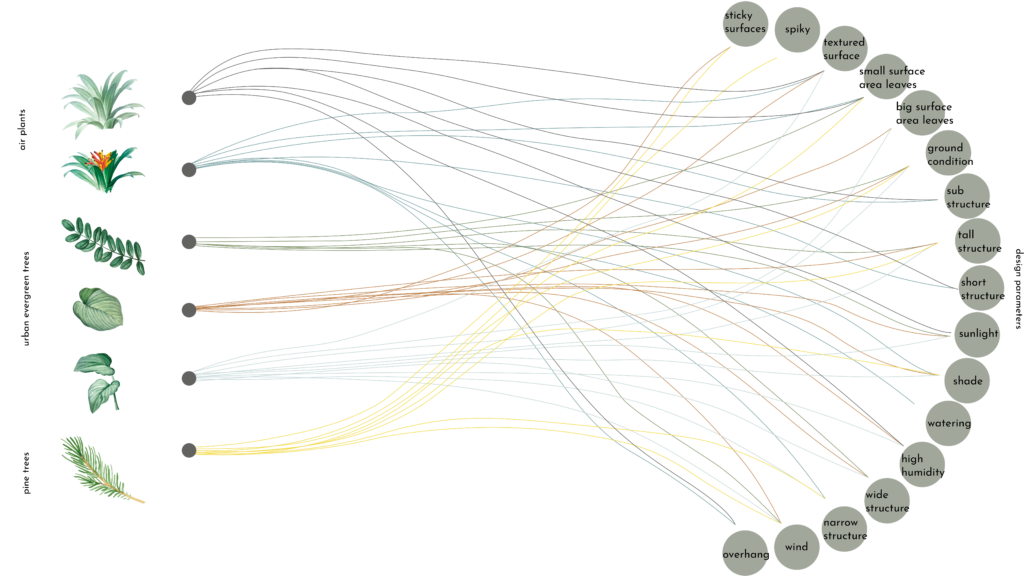
Can plant characteristics be used as a tool for biomimicry; so, can the urban design infrastructures be designed with these parameters to increase the capturing rate of particulate matters?
Design parameters which could be extracted from plant leaf characteristics
PM ACCUMULATION IN BARCELONA

There are several urban typologies to consider when designing an urban intervention in Barcelona. The case with narrow streets at Born, Gothic, Barceloneta is very different to the case with the superblocks or the main roads. Additionally, proximity to the mountains and the seafront is an important parameter to consider.


